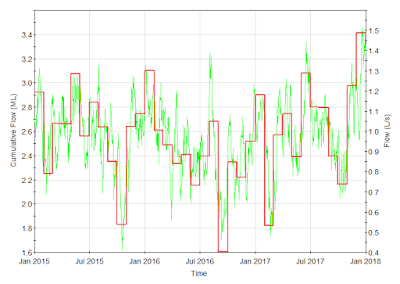The workshop is split into 2 sessions:
June 28, 2016
1-Day GoldSim Workshop September 2016
Posted by Jason Lillywhite
 GoldSim Technology Group is collaborating with the Arizona Hydrological Society this coming September to provide a 1-day software training workshop as part of their annual conference. The training workshop is only $75 per attendee and a great opportunity for networking and learning more about water resources issues in the Southwestern U.S. Net proceeds from the cost of the workshop will be donated to AHS to support scholarship and internship programs.
GoldSim Technology Group is collaborating with the Arizona Hydrological Society this coming September to provide a 1-day software training workshop as part of their annual conference. The training workshop is only $75 per attendee and a great opportunity for networking and learning more about water resources issues in the Southwestern U.S. Net proceeds from the cost of the workshop will be donated to AHS to support scholarship and internship programs.
The workshop is split into 2 sessions:
The workshop is split into 2 sessions:
June 13, 2016
Using Arrays in GoldSim
Posted by Ryan Roper
One of the most powerful features of GoldSim is its support for vector and matrix data types, or arrays. Whether you are modeling different age cohorts in a population dynamics model or you need to calculate monthly and/or yearly flow totals in a water resource model, the use of arrays can reduce complexity in your model and help you calculate useful results. If you are developing a contaminant transport model, using arrays is unavoidable since species properties are stored in vectors.
Proficiency with arrays in GoldSim is essential for many applications. Gaining a rudimentary understanding will require that you at least know how to create and use array label sets (named and indexed) and how to reference values in an array. I would definitely encourage you, though, to go beyond a basic proficiency and take advantage of the advanced capabilities that GoldSim provides. This blog post will point you to resources to help you get familiar with and start using arrays in GoldSim. I will highlight some example applications that range from very basic usage of arrays to sophisticated applications involving the use of array constructors.
 |
| Monthly cumulative flow results (see webinar 'Introduction to Arrays') |
Proficiency with arrays in GoldSim is essential for many applications. Gaining a rudimentary understanding will require that you at least know how to create and use array label sets (named and indexed) and how to reference values in an array. I would definitely encourage you, though, to go beyond a basic proficiency and take advantage of the advanced capabilities that GoldSim provides. This blog post will point you to resources to help you get familiar with and start using arrays in GoldSim. I will highlight some example applications that range from very basic usage of arrays to sophisticated applications involving the use of array constructors.
June 7, 2016
Annual Recurrence Interval of Reservoir Spills
Posted by Jason Lillywhite
Models are built to better inform decisions. Unfortunately, the numerous disparate outputs of statistical models are often difficult to make sense of for the decision makers and/or stakeholders. Compiling the risk of specific events potentially occurring in the future into a single variable can considerably assist the decision makers into comparing the various trade-offs between different scenarios.
One of our long-time GoldSim users, Simon Chambert of Macroscopia submitted a model to our Model Library that is helpful for those looking for the recurrence interval of an event like a pond overflowing. Both the recurrence interval and exceedence probability are computed and displayed for a given set of input parameters that describe the pond design and constraints. This example can be used for other models that need to compute an annual recurrence interval.
Models are built to better inform decisions. Unfortunately, the numerous disparate outputs of statistical models are often difficult to make sense of for the decision makers and/or stakeholders. Compiling the risk of specific events potentially occurring in the future into a single variable can considerably assist the decision makers into comparing the various trade-offs between different scenarios.
One of our long-time GoldSim users, Simon Chambert of Macroscopia submitted a model to our Model Library that is helpful for those looking for the recurrence interval of an event like a pond overflowing. Both the recurrence interval and exceedence probability are computed and displayed for a given set of input parameters that describe the pond design and constraints. This example can be used for other models that need to compute an annual recurrence interval.
Subscribe to:
Posts (Atom)

